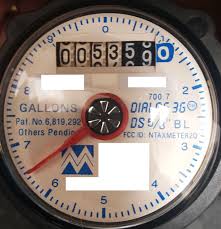Location
-
813 Joppa Rd.
Metropolis, IL 62960
Mailing
-
PO Box 491
Metropolis, IL 62960
Hours
-
8:00 AM - 3:00 PM
Monday - Friday
Your annual Water Quality Report is now available at https://fortmassacwaterdistrict.com/ccr/. This report contains important information about the source and quality of your drinking water during 2023. To speak with someone about this report or to have a copy mailed to you, please call (618) 543-7475.
Even the smallest leak in your water system can cause the loss of thousands of gallons of water each month. That loss means not only is water being wasted, but also that you will probably get an unnecessarily high water bill.
The faster you can identify the source of a leak, the faster it can be fixed. If you suspect you might have a leak, check your meter to see if it’s spinning. If you are unable to check it yourself, contact our office and we can check for you. We are all responsible for helping to save and conserve water, and we want to help you save water and money.
Quick Test: Check your water meter before and after a two-hour period when no water is being used. If the meter changes at all, you probably have a leak.
If you suspect a possible leak, please use our contact page to report it and someone will reply, or you can call our office at (618) 543-7475.
Accounting for more than 95 percent of all water waste, toilet leaks are caused by worn or damaged parts in the toilet flush tank. (Toilet flushes account for about 100 gallons of the water use in your house each day. That’s about 40 percent of the average household use.) Some of these leaks will empty directly into the sewer line without leaving any clues. Even so, you can check for these leaks. Common causes include:
Float arm problems
Remove the lid from the top of the flush tank. See if the overflow pipe and the plunger ball are working properly. Do this by flushing the toilet, watching the tank mechanism and listening. You should hear the water flow shut off. If the water does not shut off, check the water level. If it has risen above the overflow pipe, gently bend the float arm down and flush again. You may need to replace the plunger ball if the water level is about one inch below the top of the overflow pipe and you still hear water flowing.
A tiny pinhole
A pinhole opening below the overflow pipe’s water line could produce an invisible leak. Check for this by shining a flashlight down into the overflow pipe. If you see running water, you have a leak that should be repaired.
A defective plunger ball (flapper valve)
This is often a silent leak which causes the tank to continually drain and refill. Check for a worn or improperly seated plunger ball (flapper valve) by dropping a few drops of food coloring into the toilet tank. Do not flush. If a leak exists, the dye will show up in the bowl portion of the toilet, usually 1 hour is sufficient amount of time depending on how small the leak.
